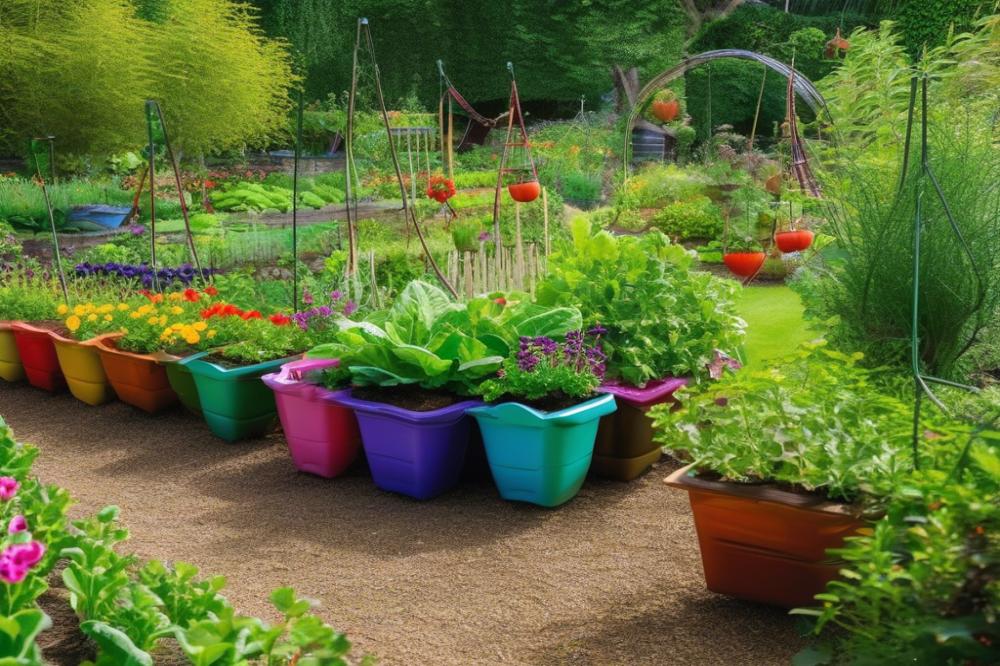The Benefits of sticky traps for Monitoring Pests
Pest management is a crucial aspect of organic gardening. Gardeners face numerous challenges in protecting their crops from unwanted insects and pests. The goal is to maintain healthy plants while avoiding harmful chemicals. Organic methods focus on non-toxic pest control strategies. By doing this, gardeners can safeguard the environment while still ensuring their plants thrive.
One effective tool in the realm of agricultural monitoring is the innovative trapping techniques that utilize insect traps. These devices play a vital role in pest monitoring. They help detect the presence of garden pests early. By identifying the specific types of insects lurking, gardeners can address the problem before it escalates.
sticky traps serve as a simple yet effective technique in capturing unwanted pests. These tools not only provide a snapshot of pest activity but also act as a deterrent. When these traps are placed around the garden, they help in crop protection while avoiding chemical pesticides. Such an approach fosters environmental safety.
Utilizing these tools can empower gardeners in their ongoing battle against pests. By observing the traps, they can gather valuable data. This information aids in fine-tuning pest management plans. Recognizing the types of pests present is essential for effective control measures.
Understanding Sticky Traps


Sticky traps are a simple yet effective method for pest control. These traps work by capturing insects that come into contact with the adhesive surface. They provide visual confirmation of pest activity, making them useful for monitoring garden pests.
Types of Sticky Traps Available for Gardeners
Several types of insect traps cater to different needs in agricultural monitoring. Yellow sticky traps are commonly used to attract and capture flying insects like aphids and whiteflies. Blue traps tend to attract thrips, which can be very damaging to crops. Some traps come in a roll format, allowing gardeners to cut them to desired sizes.
Another option is pheromone traps that use scents to lure specific types of pests. These traps can enhance early detection, empowering the gardener to respond swiftly. There are also decorative sticky traps that blend into the environment, making them less noticeable while still effective.
Comparison with Other Trapping Techniques
Compared to other trapping techniques, sticky traps offer unique benefits. Many methods require baits, which can be enticing but may also attract unwanted species. In contrast, sticky traps use no bait, focusing solely on capturing what comes into range. This not only reduces distractions but can also promote environmental safety.
Live traps are another alternative, as they catch pests without killing them. However, relocating pests can be labor-intensive and may not always solve the problem. Sticky traps help streamline pest management by providing immediate and visible results without harming the environment. Ultimately, selecting the right trapping method will depend on individual needs and pest issues.
Benefits of Sticky Traps in Pest Control


Monitoring garden pests becomes much easier with effective trapping techniques. These tools not only catch insects but also help gardeners understand their pest problems. It’s a smart way to identify which pests are present and how many. Collecting this data can guide future pest management decisions.
When it comes to agricultural monitoring, environmental safety is key. Fortunately, these traps provide a non-toxic pest control solution that doesn’t harm beneficial insects. By using insect traps, farmers can protect crops without worrying about chemicals. This approach promotes a healthier ecosystem while keeping pests in check.
Early detection of pest populations can make a significant difference in crop protection. By acting quickly, growers can prevent infestations before they escalate. Observing trends over time enables proactive measures. Using traps allows for quick responses to any increases in pest activity, saving time and resources.
In addition to being cost-effective, monitoring with traps contributes to sustainable practices. They don’t waste resources since the traps are reusable. This method not only conserves materials but also reduces the reliance on harmful pesticides. Healthier plants lead to better yields, creating a win-win situation for everyone involved.
Role of Sticky Traps in Agricultural Monitoring


Sticky traps play a crucial role in agricultural settings aimed at crop protection. Farmers frequently use these tools to monitor the presence of pests. Early detection of garden pests can lead to faster responses, minimizing potential damage. By catching insects before they can harm crops, these traps provide a practical approach to pest control. Traditional methods often rely on chemical solutions, but traps create a non-toxic alternative for managing infestations.
When discussing agricultural monitoring, it’s essential to consider environmental safety. Many growers are increasingly conscious of their impact on the ecosystem. Using trapping techniques allows them to gather data without introducing harmful substances to the soil or plants. This commitment to eco-friendly practices often resonates with consumers who value sustainable farming.
Data collected from these devices is invaluable for developing better pest management strategies. Analysis of insect captures helps farmers understand pest populations and their behaviors. Such insights lead to more informed decisions about when and how to act against pests. Adjusting crop care based on reliable information can improve yields and reduce waste. This continuous learning process enhances overall agricultural productivity.
Incorporating insect traps into regular monitoring routines is becoming common. Many agricultural experts advocate for their use alongside other controls. Combining these tools with integrated pest management practices results in a more comprehensive approach. This synergy not only protects crops but also promotes healthier ecosystems.
Implementing Sticky Traps in Your Garden


Effective placement of insect traps makes a significant difference in pest control. Choose locations where garden pests frequently appear. Observing their movement can guide you to the best spots. Traps should be positioned close to the plants most at risk. They can also work well along pathways to catch wandering insects.
For optimal usage, it’s essential to monitor the traps regularly. This allows for early detection of outbreaks. Replace traps once they become full or lose their stickiness. Keeping a log of captured pests can help you understand common problems in your garden. Proper maintenance ensures ongoing effectiveness in agricultural monitoring.
Recommendations for Specific Garden Pests
Different insects require different approaches. Yellow sticky traps work wonders for aphids and whiteflies. These pests are notorious for damaging delicate crops. For larger pests like beetles, a larger size trap may be necessary. Consider changing colors or adding bait to attract specific insects.
Additionally, traps can be useful for monitoring funguses and spores. Attracting unwanted visitors helps in understanding the threat level. Some traps even target disease-carrying insects that can harm plants. Each captured pest provides valuable data for future prevention strategies.
Integration with Other Organic Remedies
Combining trapping techniques with organic remedies enhances pest management. Insecticidal soaps and sprays can provide an additional line of defense. This combination promotes environmental safety while keeping crops healthy. Companion planting can also work alongside traps. Certain plants naturally repel pests, giving you a holistic approach to crop protection.
It’s wise to rotate your methods regularly. This prevents pests from adapting to any single approach. Employing non-toxic pest control creates a safer environment for beneficial insects too. Always remember, it’s about balance in the ecosystem of your garden. Incorporating various strategies leads to sustainable gardening practices.
Limitations and Considerations
Sticky traps are a simple method for monitoring pests. However, they do have limitations. These traps primarily attract certain insects, which may not give a complete picture of the pest population. Many species may bypass the traps entirely, leaving farmers without critical information. This is especially important for crops where a variety of pests can cause damage.
When relying solely on insect traps, one might miss key pest activity. It’s wise to combine this method with other pest management techniques. For example, scouting fields regularly helps in early detection. Recognizing signs of infestation can make a difference before damage escalates. Additionally, using pheromone traps can attract specific pests that other methods might not catch.
Environmental Considerations in Trap Usage
Environmental safety is crucial when using any pest control method. Although many traps are non-toxic, their placement should be strategic. Traps can inadvertently capture beneficial insects, which play a vital role in crop protection. Careful positioning helps protect these helpful species while still monitoring harmful ones.
Furthermore, consider the landscape. Urban areas might have differing pest challenges compared to farms. The types of garden pests present can affect trap effectiveness. Thus, understanding local conditions can improve monitoring efforts. Fluctuations in weather also impact pest behavior and trap success. Keeping an eye on environmental changes is always important in agricultural monitoring.
Final Insights
Sticky traps offer a range of benefits for monitoring pests effectively. Firstly, they provide a simple way to identify the presence of various insects in gardens. Many homeowners appreciate how easy it is to set up these traps. By catching pests, individuals can gain a better understanding of what is affecting their plants.
Using these traps also supports pest control strategies. Instead of relying solely on chemicals, gardeners can take a more integrated approach. This method helps protect beneficial insects while targeting harmful ones. Moreover, the visible evidence of pests on these adhesive surfaces can prompt quick action, reducing potential damage to plants.
Organic pest management continues to gain traction among gardeners. Many now seek solutions that prioritize the environment. As awareness increases, trends in sustainable gardening are evolving. Innovative methods, including the use of insect traps, are becoming more common. As a result, nature-friendly practices are making a significant comeback.
In conclusion, monitoring pests through adhesive devices can be a key element in managing garden health. Homeowners who adopt these techniques often find a balance between plant care and biodiversity. Looking ahead, such sustainable practices will likely play an essential role in landscaping. Embracing these solutions ensures a more harmonious relationship with the environment.



